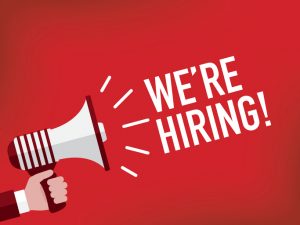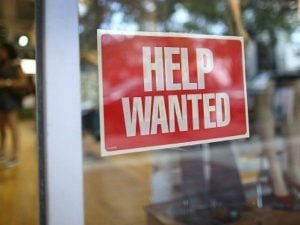Unemployment Rate Falls to 16-Year Low

June 2, 2017 – Employers added 138,000 jobs last month as the U.S. unemployment rate fell to 4.3 percent, the lowest since 2001, according to the most recent U.S. Bureau of Labor Statistics report. During the month, the number of workers unemployed dropped to 6.9 million. May marked the 78th straight month of job growth in the U.S. Economists polled by Reuters had forecast payrolls increasing by 185,000 jobs last month and the unemployment rate holding steady at 4.4 percent.
President Donald J. Trump has pledged to dramatically accelerate the pace of job growth and oversee the creation of 25 million new jobs in the next decade. By comparison, the U.S. has added 15.5 million jobs since 2010, a mark that includes significant catch-up from the mass layoffs of the financial crisis.
Where Job Growth Occurred
During the month, job growth took hold in a number of broad industries. Here’s a look at some of the most important key sectors:
- Employment in healthcare rose by 24,000 in May. Hospitals added 7,000 jobs over the month, and employment in ambulatory healthcare services continued to trend up (+13,000). Job growth in healthcare has averaged 22,000 per month thus far in 2017, compared with an average monthly gain of 32,000 in 2016.
- Mining added 7,000 jobs in May. Employment in mining has risen by 47,000 since reaching a recent low point in October 2016, with most of the gain in support activities for mining.
- Employment in professional and business services continued to trend up (+38,000). The industry has added an average of 46,000 jobs per month thus far this year, in line with the average monthly job gain in 2016.
- Employment in food services and drinking places also continued to trend up in May (+30,000) and has grown by 267,000 over the past 12 months.
- Employment in other major industries, including construction, manufacturing, wholesale trade, retail trade, transportation and warehousing, information, financial activities, and government, showed little change over the month.
 Tightening Labor Market Good News for Job Seekers
Tightening Labor Market Good News for Job Seekers
Organizations need talented employees to drive strategy and achieve goals, but with an improving economy finding and recruiting the right people is becoming more difficult. It’s clear that the changing global economy has created a demand for new jobs.
Strongest Hiring Outlook In 10 Years
Forty five percent of U.S. employers plan to hire full-time, permanent employees in the second quarter – a significant jump from 34 percent last year and the highest percentage for the quarter dating back to 2007, according to CareerBuilder’s latest forecast.
“This is the best forecast we have seen for the second quarter since we started doing this survey more than 10 years ago,” said Matt Ferguson, chief executive officer of CareerBuilder. “Nearly half of employers hired full-time employees in the first quarter and that momentum is expected to continue over the next few months.”
He said companies are paying close attention to policies introduced by the new Trump administration to assess the potential impact on businesses, but the hiring outlook is “optimistic.”
Sheila Greco, founder of SGA Talent in Amsterdam, NY, said that for her firm the first quarter of the year was strong and that she and her clients are optimistic about the months ahead. “I know from a small business perspective, we see this as being a very positive time,” Ms. Greco said. “A lot of times people put their hiring on pause in an election year to see what happens with the outcome. Now that it’s over a number of our clients have just said, ‘You know what? We paused it for a while and now we’re going full bore. We need talent.’”
There is no denying a general giddiness in the job market. “Whether it continues will depend on whether the Trump administration and Republican lawmakers can convert rhetoric to legislation,” said Andy Knox, managing director of Chelsea Partners, a Los Angeles-based search firm.
According to the latest “Employment Outlook Survey,” released by ManpowerGroup, employers expect the pace of hiring to continue picking up this quarter, with nearly 25 percent planning to add staff through June. The upbeat forecast indicates the continued uncertain political climate is having little effect on employer confidence.
Nationwide, employers in all 13 industry sectors expect to add staff in the coming quarter. Industries reporting the strongest second quarter hiring intentions are leisure & hospitality (+28 percent), wholesale & retail trade (+21 percent), transportation & utilities (+20 percent) and professional & business services (+19 percent).
“U.S. employers have a positive outlook for the second quarter as the country waits to understand how the new administration’s policies will come into effect,” said Michael Stull, senior vice president, Manpower North America.
 Five Job Trends to Watch This Year
Five Job Trends to Watch This Year
This past year, America’s job market made remarkable gains. After years of lackluster pay growth and an anemic economic recovery, the jobs turned a corner in 2016. So what can we expect for 2017?
Lack of Available Talent
A company’s workforce is clearly its most valuable asset. The largest expense on any employer’s balance sheet is headcount, and investing in employees and their skills are absolutely critical to an organization’s success. Smart employers are acting now to ensure they have the most highly skilled and productive workforce to ensure their organization is prepared for whatever business challenges are coming.
According to the “Definitive Guide” report by Adecco, nearly half (48 percent) of best-in-class companies are already increasing training in critical skill areas to help combat the skills gap. Employees likely want to fill any holes in their skill-set, but cost can be a prohibitive factor. These programs can be expensive. But for companies, the initial investment in alternative training programs may pay lasting dividends, especially where global competition is concerned, said Adecco.
Governments, businesses and employees can learn a lot from what the U.S. economy and workforce endured during the great recession. What is certain is that American workers will show resilience in the face of a daunting labor market, said Adecco. By applying that same resilience, innovation and reinvention to the current skills gap challenge, the report concluded, the American workforce will undoubtedly evolve to meet the needs of the new global economy.
A significant part of the challenge will be balancing the development of soft and hard skills; both will be required to effectively navigate and tackle new industries, technologies and global competitors. And while these are the same dynamics responsible for widening the skills gap, the report said, they will also help connect the American workforce and economy to a greater success and prosperity.
Contributed by Scott A. Scanlon, Editor-in-Chief; Dale M. Zupsansky, Managing Editor; Stephen Sawicki, Managing Editor; and Chase Barbe, Managing Editor – Hunt Scanlon Media











